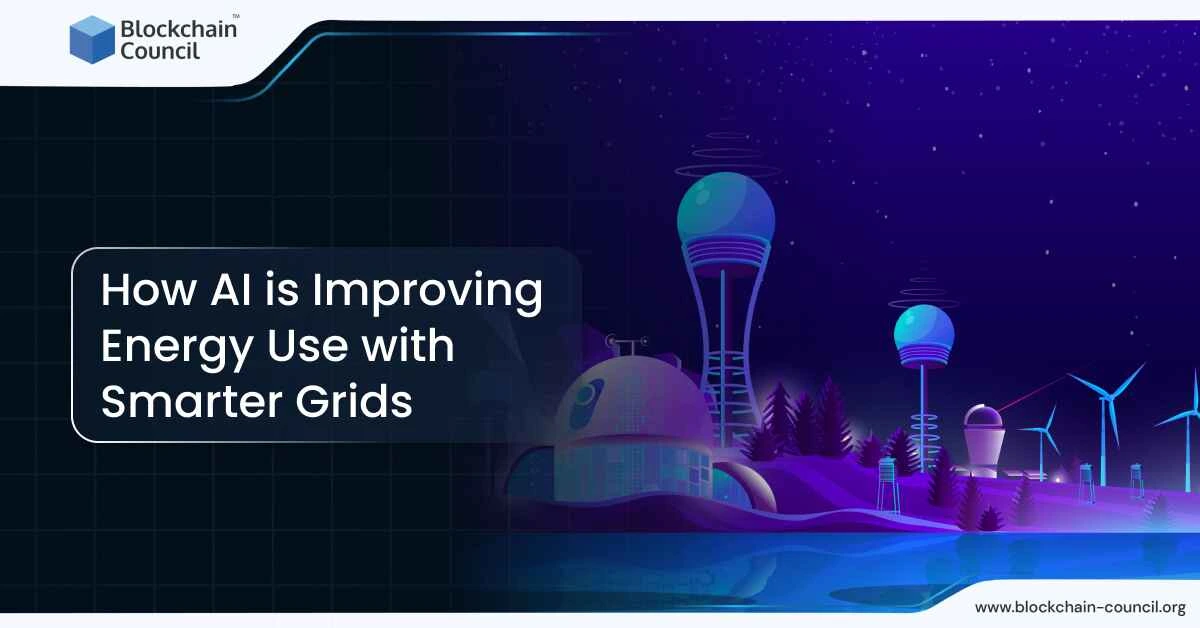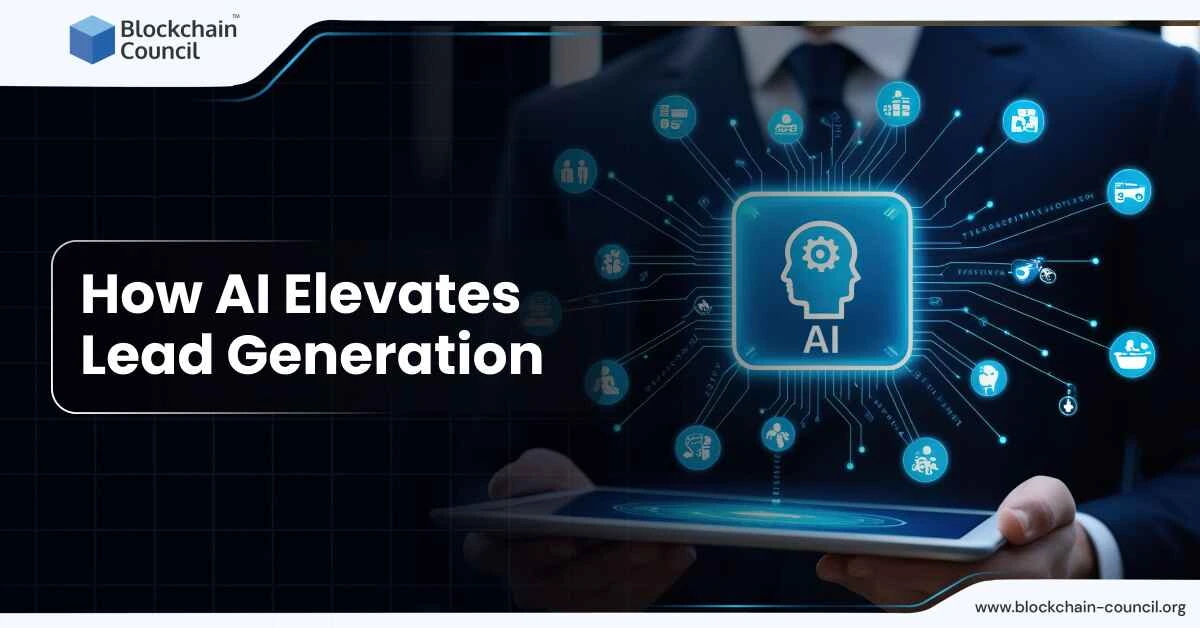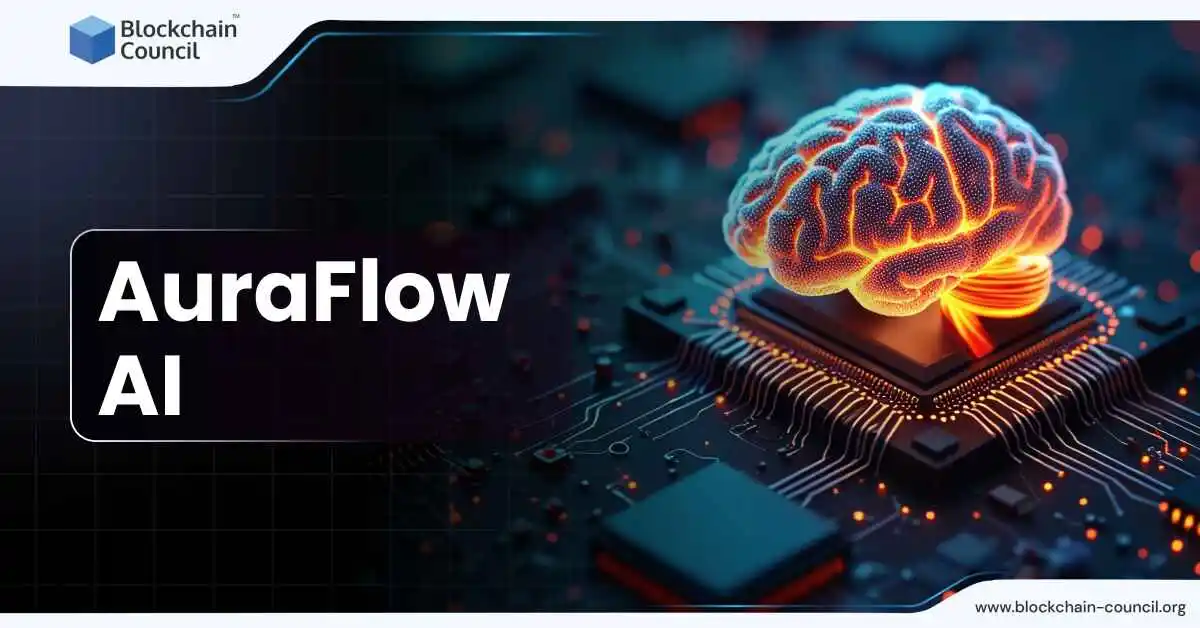
- Blockchain Council
- November 13, 2024
Artificial Intelligence (AI) is playing an important role in changing how we manage energy through advanced grid systems. By combining data analysis, machine learning, and real-time decision-making, AI helps manage energy consumption. It also helps to integrate renewable energy sources, and improve the overall reliability of energy grids.
Introduction to AI and Smart Grids
As energy demands increase and environmental concerns grow, energy grids need to adapt to be more efficient. Traditional grids often have trouble managing the balance between supply and demand, especially as more renewable sources like solar and wind are added. AI steps in to help make grid management smoother by reducing waste, predicting future energy needs, and keeping a steady supply.
A smart grid relies on digital communication tools to track and respond to local energy use changes. AI makes these grids even better by enabling faster, more accurate responses. It adjusts in real-time and uses predictive methods to anticipate future needs.
Improving Energy Efficiency
AI-driven systems are being used to fine-tune the balance between how much energy is needed and how much is available. For instance, utility companies can use AI to study data from smart meters, weather reports, and past trends to predict energy consumption patterns. This helps prevent the grid from being either overloaded or underused. In California, for example, AI systems are used to manage renewable energy, predicting the production from sources like solar panels and wind turbines. This ensures any extra clean energy is stored or sent to where it’s needed.
In 2023, these AI-driven tools helped reduce the curtailment of renewable energy in California, saving over 2.6 million megawatt hours of energy that could power hundreds of thousands of homes. This highlights the potential AI has to minimize waste while making grids more efficient.
Earning the Certified Artificial Intelligence (AI) Expert™ certification can deepen your understanding of how AI is being applied in smarter grids and energy management systems, improving overall efficiency.
Integrating Renewable Energy Sources
One big issue with renewable energy is that it’s not always available—solar power only works when the sun is out, and wind energy depends on windy conditions. AI helps solve this by predicting when these resources will be available and adjusting storage and grid operations to match. AI systems can manage energy storage by saving extra energy during peak production times and releasing it when demand rises. This smooths out the fluctuations in energy supply, making it easier for grids to depend more on renewable sources.
Xcel Energy, a utility company in the U.S., uses AI to better predict the output of their solar and wind resources. These AI tools help maintain a steady energy supply, cutting back on the use of fossil fuels. This approach aligns with the broader goal of reducing emissions, which many countries are aiming to achieve by 2050.
Predictive Maintenance and Preventing Downtime
AI is not only improving energy efficiency but also helping to prevent problems before they happen. Traditional grid maintenance usually happens after something has already failed, but AI changes that. It monitors the grid in real time and uses machine learning to predict when equipment might break down. This is especially important for aging grids, which are prone to unexpected failures.
With predictive maintenance, utility companies can plan repairs and avoid expensive downtimes. AI systems also catch unusual grid performance issues and suggest preventative actions, saving both time and money. Many countries are already adopting this proactive approach, which reduces operational costs and improves grid reliability.
As AI plays a larger role in energy use, earning the Certified Artificial Intelligence (AI) Developer™ credential can equip you with the tools to create more efficient and sustainable grid systems.
Accurate Demand Forecasting and Dynamic Pricing
One of the key uses of AI in smart grids is its ability to forecast energy demand accurately. AI looks at data like weather conditions, usage trends, and past records to predict how much energy will be needed. This allows energy providers to manage production and distribution more efficiently, making sure the supply meets demand without wasting resources.
AI is also being used to roll out dynamic pricing models. These models change energy prices in real-time based on demand. When demand is low, prices drop, encouraging consumers to use more electricity. When demand spikes, prices go up, nudging people to reduce usage. This system helps balance demand and reduces the stress on the grid during busy times. For consumers, this means lower bills and more personalized energy-saving options.
AI in Energy Storage Optimization
AI also plays a big role in improving how energy is stored, which is vital for modern grids. Battery systems are essential for managing renewable energy, and AI helps decide when to store energy and when to release it. AI-driven models help providers use stored energy more efficiently, cutting waste and ensuring renewable energy is available when production is low.
With advancements in battery technology and AI’s help, renewable energy is becoming a more reliable alternative to fossil fuels. This is especially clear in recent projects across the U.S. and Europe, where AI optimizes grid-connected battery systems to make renewable energy even more dependable.
Looking to expand your understanding of AI in energy? The Master Artificial Intelligence (AI) Learning Path offers insights that can enhance your ability to contribute to AI-driven innovations in smarter grids and energy management.
Conclusion
AI is changing how the energy sector operates by making smart grids more efficient, reliable, and sustainable. From preventing breakdowns to helping integrate renewable resources and using flexible pricing, AI is helping us use energy more efficiently while cutting waste.
As more investments go into AI-powered grid systems, these technologies are likely to become more common, offering solutions to the growing need for clean, dependable energy. By using AI, smart grids are not only becoming smarter but also contributing to a more sustainable energy future for everyone.
Managing energy systems using AI comes with its own challenges. Our Unlimited Learning Subscription (AI) gives you access to the latest AI tools that can support you in handling the demands of smarter grid management.





































































 Guides
Guides News
News Blockchain
Blockchain Cryptocurrency
& Digital Assets
Cryptocurrency
& Digital Assets Web3
Web3 Metaverse & NFTs
Metaverse & NFTs
